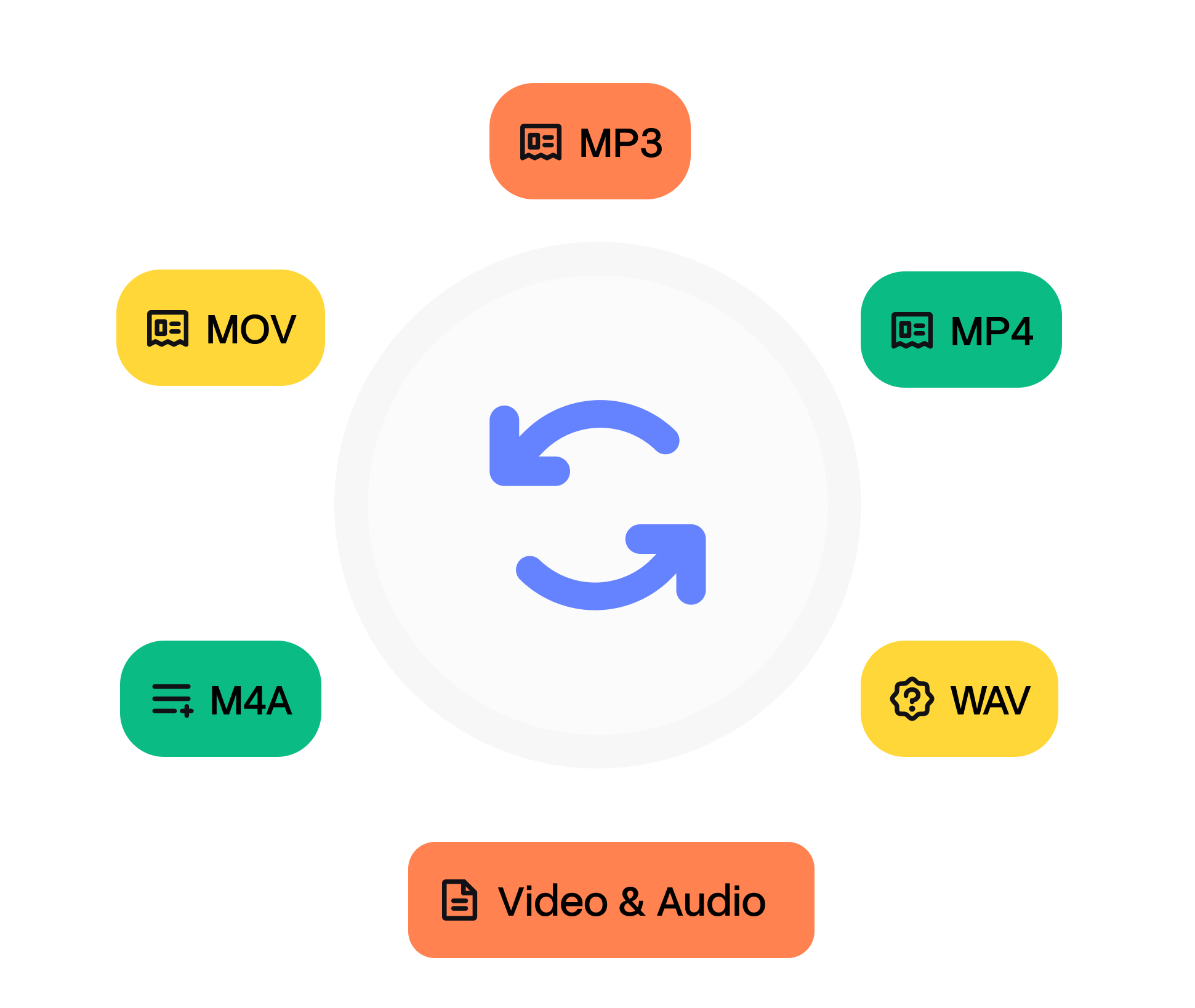1. Upload your AVI file
Start by dragging and dropping your AVI file into the upload area, or click to browse your device and select your file in the list.
Convert your AVI (.avi) file to FLAC (.flac) in seconds straight from your browser. No installs. No watermarks. 100 % free.
Convert from AVI to FLAC but also 47+ other formats.
No signups, no fees, no hidden restrictions. Convert AVI to FLAC directly in your browser for free.
We take your security seriously. All file transfers use 256-bit SSL encryption.
No installs needed; convert AVI to FLAC right from your browser, on any device, anytime.
Start by dragging and dropping your AVI file into the upload area, or click to browse your device and select your file in the list.
Next, pick FLAC as the format you’d like to convert your video into. Alternatively, we support +47 formats that you can choose from. When you’re ready, hit the Convert button.
Once the conversion is complete, you’ll get a download link right away. Just click to save the file to your device. It’s fast, easy, and doesn’t require any software installation.

Audio Video Interleave (AVI) is Microsoft’s venerable multimedia container introduced with Video for Windows. It stores audio and video streams in interleaved RIFF chunks, allowing simple players to read sequentially from disk. While it supports multiple codecs, it lacks modern features like B‑frame timestamping and embedded subtitles. Released in 1992 to counter Apple’s QuickTime, AVI became ubiquitous on Windows 95 thanks to the Indeo and Cinepak codecs. The rise of DivX in 1999 rejuvenated AVI for internet sharing, but mismatched VBR audio led to sync headaches. Microsoft replaced it with ASF/WMV and eventually MP4, yet legacy camcorders and CCTV systems still output AVI.
Free Lossless Audio Codec (FLAC) compresses PCM audio by 30‑60 % without discarding information, making it ideal for archiving CDs and hi‑res mixes. It uses linear prediction and Rice coding and wraps metadata like cuesheets and artwork in a flexible block structure. Developer Josh Coalson released FLAC 1.0 under the open‑source BSD licence in 2001 as an answer to proprietary formats like Monkey’s Audio. Within a decade, hardware vendors Cowon, FiiO, Logitech Squeezebox added native decoding. In 2015, Apple began supporting FLAC in iOS 11’s Files app, cementing its place as the de‑facto lossless standard.
Need to convert your audio file from AVI to FLAC? It’s simple. Just upload your file, choose the output format, and click ‘Convert’. That’s it — no downloads, no complicated software, and no hidden costs. Our tool is designed to be fast, secure, and completely free, so you can turn your files into the format you need in seconds.
Whether you’re converting audio for sharing, editing, or playback on different devices, our converter ensures high-quality output every time. After your conversion, you’ll also have the option to transcribe audio to text, making it easy to turn your FLAC files into accurate, editable text in just a few clicks.
Windows Media Player, VLC, and MPC‑HC open most AVI files. If the clip uses an obscure four‑character codec (FourCC), install the corresponding VFW decoder or remux to MKV with FFmpeg. Adobe Premiere Pro and DaVinci Resolve import AVI but may transcode on the timeline for GPU effects.
VLC, foobar2000, Winamp, and the Linux desktop decode FLAC out of the box. In the studio, Reaper and Ableton Live import FLAC while preserving metadata. If you need playback on constrained devices, transcode to ALAC or high‑bit‑rate MP3 with no audible penalty in casual listening.
Other tools